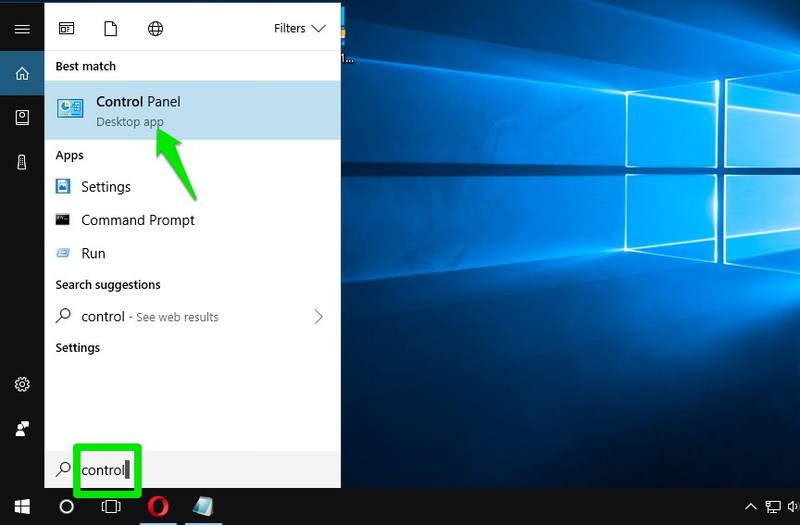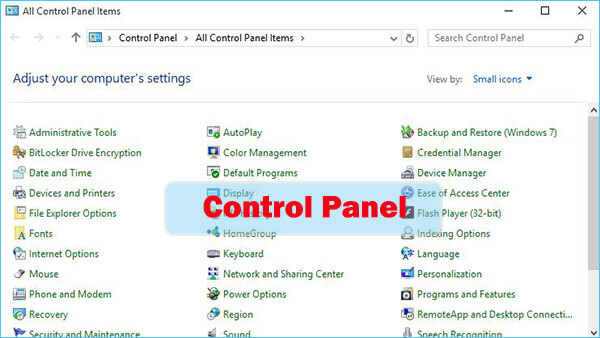The Control Panel is the centralized configuration area in Windows computers, laptops, and tablets. Which refers to the graphical user interface. It allows users to view and access system settings through an applet, allowing them to add hardware and software, remove software, control user accounts, and edit accessibility options. See you. So, in a nutshell, it’s essentially a software module designed to carry out management and administrative functions and provide access to certain software features.
Computersolve Explains Control Panel
The control panel is normally part of the system’s graphical user interface (GUI), which provides easy management and access to panel components.
The control panel is made up of a group of individual control panel applets. Therefore, using the control panel actually implies the use of one or more applets to modify the way in which some parts of Windows work.
Way to Access the Control Panel-
If you want to change something about the way it looks or works, checks out Control Panel as Windows. In recent versions of Windows, Control Panel resides in the Windows system folder or category in the app list. In other versions, open the Start menu and then choose Control Panel, or Start > Settings > Control Panel.
Note: Although this isn’t the “official” way to open and use the options in Control Panel, there’s also a special folder you can call GodMode that gives you all the same Control Panel features but in a simple one-page folder. ,
Easy way to use Control Panel –
Control Panel is actually a collection of shortcuts for individual components called Control Panel applet. So, using Control Panel really means using an individual applet to change some part of the way Windows works.
If you’re looking for a way to directly access areas of the Control Panel without going through the Control Panel first, check out our list of Control Panel commands in Windows for the command that starts each applet. Since some applets are shortcuts to files with the CPL file extension, you can point the CPL file directly to open that component.
For example, controlling timedate.cpl and controlling hdwwiz.cpl is a shortcut to Device Manager to open date and time settings in some versions of Windows.
What is the function of the Control Panel?
Panels consist of many different components or applets. Therefore, using Control Panel is like using individual utilities to modify the way Windows performs certain functions. So the panel is essentially a part of your hosting service, but also comes bundled with the operating system. You will find examples of hardware control panels in keyboard and mouse, display, etc., and software control panels like date and time, fonts, power options, administrative tools, etc.
Every tool and utility running in the background has its own code. While most control panels are part of the Windows operating system, others can be installed using third-party applications. For example, when you install a new mouse on a computer, it may take a CD with it to install the specific Control Panel for that mouse. There are also graphic cards that can install additional controls to give users more control over the machine’s visual settings. No matter where Control Panel is installed, you will find them located in the Control Panel folder.
Sections of the Windows Control Panel :
There are eight main areas on the Control Panel, containing different tools designed to optimize your computer.
- System and Security – A section to check your computer’s status, backup and restore, and others.
- Network and Internet – View network status.
- Hardware and Sound – View which devices are on your computer and add devices.
- Programs – Uninstall programs.
- User Accounts – Change user accessibility.
- Appearance and Personalization – Change desktop options, like fonts and screen readers.
- Clock and Region – Change date and time.
- Ease of access – Optimize your display settings.
What does the Control Panel view look like?
- Applets are displayed in the Control Panel in two major ways: by category or individually. All Control Panel applets are available either way, but you may prefer one method of finding an applet over another:
- Windows 11, 10, 8, and 7: Control Panel applets are displayed by category, which groups them together logically, or in Large Icons or Small Icons view, which lists them separately.
- Windows Vista: Control Panel Home view groups applets, while Classic View shows each applet individually.
- Windows XP: Category View groups applets and Classic View lists them as separate applets.
In general, category views give a little more explanation of what each applet does, but sometimes it can be difficult to get to where you want to go. Most people prefer the classic or icon views of the Control Panel, as they learn more about what the different applets do.
What is Control Panel Availability?
Control Panel is available in almost every Microsoft Windows version, including Windows 11, Windows 10, Windows 8, Windows 7, Windows Vista, Windows XP, Windows 2000, Windows ME, Windows 98, Windows 95, and more.
Throughout the history of the Control Panel, components were added and removed in every new version of Windows. Some components were also moved to the Settings app and PC Settings in Windows 11/10 and Windows 8 respectively.
What Can You Benefit From Control Panel?
- When you have a control panel, you don’t need software that can unnecessarily clutter up your computer. For example, cPanel will let you access websites from anywhere in the world using a browser. You can then upload and download system files based on your needs. It is fast and efficient and most importantly, space-saving.
- Compared to traditional terminals, the control panel is better as it provides statistical tools. These will help you stay informed about the people who access your website, their location and the duration of their access to your site.
- Easy to install software with control panel. So you can seamlessly add, remove and edit web applications. For example, you can easily add forums and shopping carts, image galleries and billing software, and even a CMS like WordPress.


